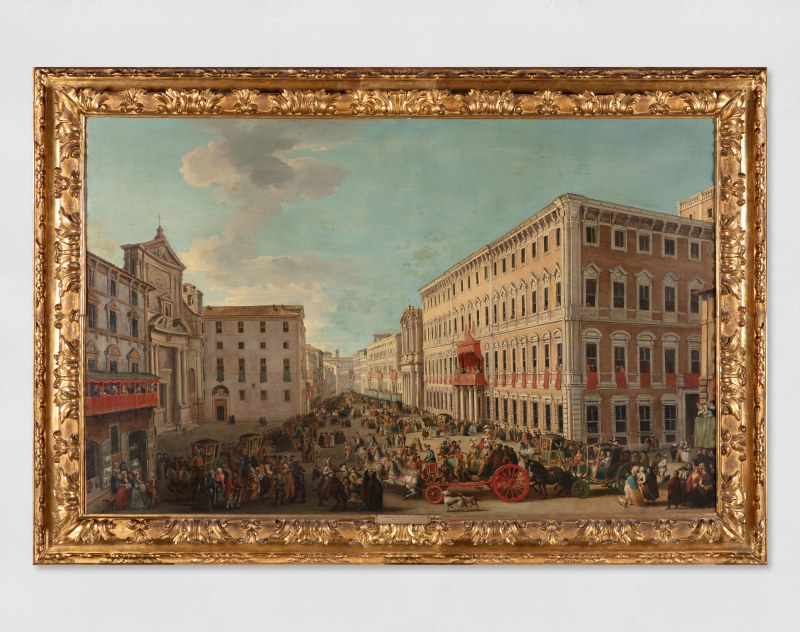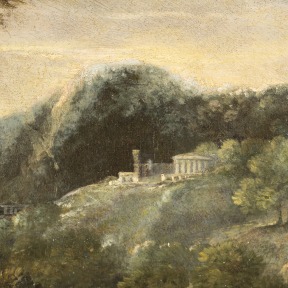-
Biography
Giovanni Paolo Panini (Piacenza, Italy 1691 – Rome, Italy 1765)
Born in Piacenza in 1691, studying in the seminary, he learned the notions of perspective and architectural painting.
In 1711 he moved to Rome to further his artistic studies, where Panini established himself as a landscape painter, focused on architecture and perspective, before joining the drawing academy of Benedetto Luti from 1717-1718. He was influenced by the paintings of classical ruins by Giovanni Ghisolfi, the landscapes of Jan Van Bloemen and Andrea Locatelli, and topographical views by Gaspar Van Wittel.
From his first years in the capital, Panini decorated the villas and palaces of the Roman ecclesiastical intelligentsia and aristocracy with frescoes. In 1718, he was elected to the Congregazione dei Virtuosi at the Pantheon and, in 1719, joined the Academy of San Luca in Rome; in 1754 and 1755, he served as the Academy's president. Panini's association with the French in Rome brought significant career advancements, particularly from 1724, when he married the sister-in-law of Nicolas Vleughels, director of the French Academy in Rome. Panini taught here and, in 1732, he was recognised as a member of the Paris Royal Academy of Painting and Sculpture, an honour received by few Roman artists.
His major patrons included Cardinal Melchior de Polignac, acting on behalf of Louis XV, and Count de Choiseul, the French Ambassador to Benedict XIV. Panini influenced the work of French painters including Claude-Joseph Vernet, Hubert Robert, and Jean-Nicolas Servandoni.
As well as painting, Panini also worked as an architect, designing the villa of Cardinal Valenti and the Santa Maria della Scala chapel. He produced fireworks, festival equipment and other architectural decorations, skilfully reproduced in his paintings of Rome.
In addition to the landscapes (depicting the countryside and towns) for which he is best known, Panini also painted religious and important historical scenes, real and imaginary architecture and imaginary Roman ruins.
Photo UniCredit Group (Sebastiano Pellion di Persano)
-
Works
Giovanni Paolo Panini (area): Italian, 1691-1765
Giovanni Paolo Panini, born in 1691 in Piacenza, was one the most celebrated Roman painters of the eighteenth century.Join our mailing list
* denotes required fields
In order to respond to your enquiry, we will process the personal data you have supplied in accordance with our privacy policy.









